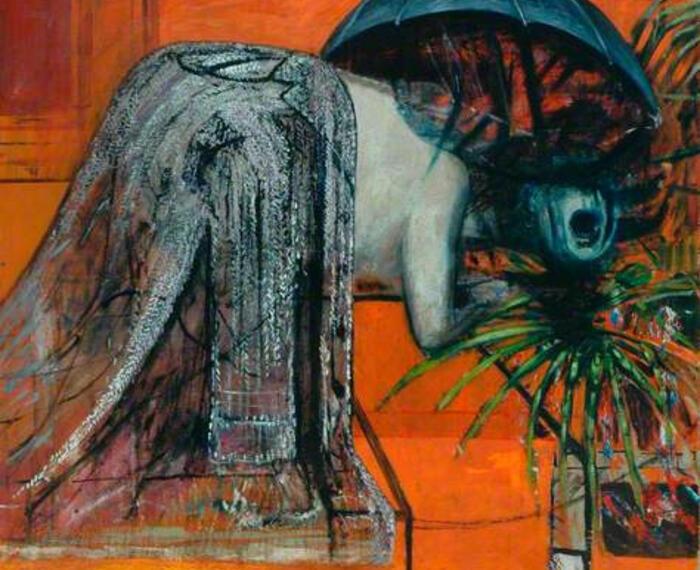

Piero Sadun (b. Siena, Italy 11 November 1919 – d. Siena, Italy 22 NOvember 1974) attended evening courses at the Siena Art Institute and at the studio of the conservator Umberto Giunti (1886-1970), the infamous ‘fresco-forger’. He also studied with Primo Conti (1900-1988) and Memo Vagaggini (1892-1955) in Florence. He opened his own studio on the via Diacceto in Siena but worked under the pseudonym of Tommaso Duna until the end of the second World War to avoid the racial laws under the fascist regime in Italy because he was Jewish. In March 1944 he joined the partisans and was with the 2nd “Favalto” Battalion of the XXIII Pio Borri Brigade until the liberation.
In 1945, he moved to Rome where he began teaching at the Liceo Artistico. Having created costume sets for the ballet The Prodigal Son, to music by Prokofiev, at the Teatro dell'Opera in Rome, he taught the history of costume at the Centro Sperimentale di Cinematografia between 1951-3, before moving to Urbino to teach at the Art Institute. He was also a set and interior designer. In 1969 he became the first Director of the Academy of Fine Arts in L’aquila but by 1973 had lost his speech due to medical issues and died the following year. He had participated at the Venice Biennale several times from 1950 and exhibited his paintings in Rome, at the Galleria il Pincio, Galleria La Medusa and at the Palazzo delle Esposizioni, in New York (1957) and in Milan (1958) and throughout Italy in 1959 when Derek Hill (1916-2000) purchased the still life picture for the Contemporary Art Society that was donated to Birmingham Museums.